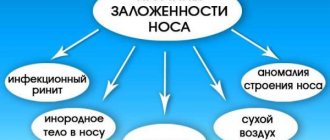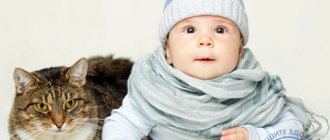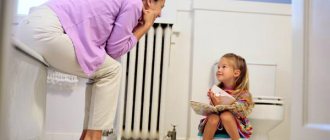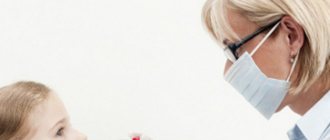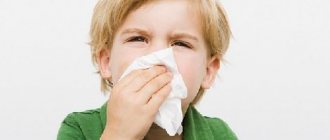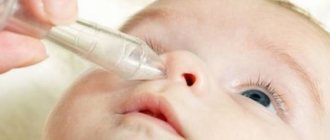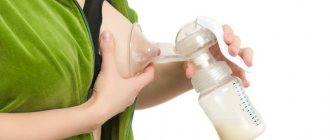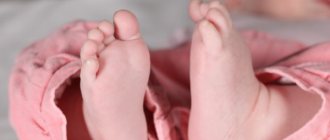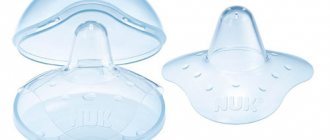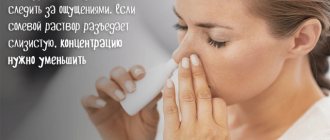When should a newborn release gas?
The newborn period is marked by the baby’s adaptation to new living conditions, as well as the emergence of some transient and functional states. These include jaundice, infantile acne, functional constipation and colic. The appearance of mild regurgitation or periodic restlessness in a baby with tightening of the legs and arms is a normal phenomenon associated with the immaturity of the nervous and digestive systems.
Indications for the use of a syringe or gas outlet tube in infants:
- persistent constipation that cannot be relieved by massage or medications;
- severe bloating, lack of gas discharge;
- restlessness, crying of a child or refusal to eat due to flatulence.
In any case, mechanical removal of gases from a child should be used only in extreme cases, preferably after consultation with a pediatrician. In this case, it is important that the medical professional tells the parents the algorithm for using a syringe or demonstrates it.
Reasons for the formation of crusts in the nose
If the child does not have a stuffy nose, then the nasal sinuses should be examined for crusts. Crusts or “boogers” are formed from dried snot, lint and dust. Dry warm air compresses mucus, and it sticks to the walls of the nostrils in the form of crusts. Frequent dryness in the nose is a sign of a lack of moisture in the child’s body. Artificial people especially often suffer from this. What to do in this case, how to clean a newborn’s nose from “bugs”?
The crusts must first be softened. The following tools are suitable for this:
- a solution of salt and warm water (1 teaspoon of salt per 1 liter of water);
- sodium chloride solution (saline);
- nasal drops based on sea water for infants (“Aquamaris”, “Aqualor”, “Salin”, Humer”, “Morenazol”).
One or two drops in each nostril of any of the solutions will be enough to soften the dry crust.
Important! Some mothers use breast milk to rinse their baby's nostrils. This should never be done, since dried milk is an excellent breeding ground for bacteria.
After the mucus has softened, you can begin the cleaning procedure. Many mothers often turn to their children's doctor with the question: how to properly clean a newborn's nose if he constantly turns his head and behaves restlessly?
Instructions for use
Preparation of tools
A syringe should be purchased at a pharmacy - one should be small (27-60 ml in volume) and have a soft tip.
Before using the syringe, you need to cut off half of its rounded part (bottom) to make it look like a watering can. Otherwise, it will not be possible to remove the gases.
This method of getting rid of bloating or colic is an alternative and should be used only in the absence of a gas outlet tube.
Preparing the baby for the procedure
Before the procedure, the child should be placed on a disposable diaper, preferably on a flat surface.
You should also prepare a clean diaper, baby cream or Vaseline, napkins and the pear itself. After laying the baby down, it is recommended to massage his tummy: you need to carefully and gently move your hand from one side of the belly to its center, and then from top to bottom. The massage must be repeated 3 times on each side. This will help direct gases into the rectum, towards the anus.
Placement of the syringe
The rules for using a syringe are similar to those when using a gas outlet tube. Algorithm for removing gases using a trimmed pear:
- Place the newborn baby on his back, lift his folded legs up with one hand and slightly bend them at the knee and hip joints. Older children (6-12 months) can be turned on their left side and also bend their legs.
- Lubricate the tip of the rubber bulb and the anal ring with thick baby cream or Vaseline. This will make inserting the tip easier.
- Insert the tip into the rectum with slow and gentle movements to a depth of 2-4 cm. For more gentle insertion, you can use circular movements.
- If the child experiences severe anxiety or crying, stop the procedure and do not resort to violent movements.
- Perform a light abdominal massage to speed up the passage of gases.
- Hold the syringe for 5-10 minutes until the bloating is completely eliminated, then carefully remove it in a circular motion and wash the baby.
If during the procedure the child begins to cry, then it should be stopped. You can repeat it after the baby calms down.
How to clean a rubber syringe?
The outside and inside of the syringe must be thoroughly washed with soap and warm water after each use.
So, to clean the inside:
- release the air from the syringe by dipping the rubber tip into soapy water;
- release the flask and shake its contents thoroughly, then squeeze again.
Repeat this procedure several more times, constantly changing the water to clean water, and then place the syringe in a glass with the tip down to dry.
Auxiliary options for getting rid of gases
Effective prevention of colic and bloating in young children is to regularly lay the baby on the stomach before feeding and 15-20 minutes after it, as well as massage the abdomen.
Bending the baby's legs at the knee and hip joints, as well as applying a warm diaper to the stomach can speed up the passage of gases. This helps to relax the smooth muscles of the intestine during spasms and enhances peristalsis.
Gas outlet pipe
Purchased at a pharmacy.
There are disposable rectal probes and reusable tubes, Apexmed and Alphaplastik. Indications and placement rules, such as when using a syringe. The only difference is the need to lower the free end into a container with liquid, which makes it easier to control the release of gases.
Medications
The following medications can be used to relieve bloating in infants:
- “Espumizan”, “Bobotik”, “Sab Simplex” - based on simethicone, are allowed from the neonatal period. Contraindications: intestinal obstruction, individual intolerance to the active ingredients of the drug.
- Duphalac is a lactulose-based laxative, more suitable for relieving constipation. Not prescribed for children with galactosemia, lactase deficiency, or intestinal bleeding.
- Plantex is a herbal preparation that contains fennel oil and fruits. The drug is contraindicated for lactase deficiency or allergies to the composition. Despite the frequent prescription of Plantex by pediatricians, the drug has no proven clinical effectiveness.
Medications should not be given to a child on their own, but only after consultation with a pediatrician.
First aid kit for newborns
What to collect and how to choose
Even during pregnancy, when the first worries have passed, young parents begin to think that after birth the baby will need things, furniture and care products.
One of the important points in preparing for the birth of a child is collecting a first aid kit for the newborn. It is worth immediately clarifying that the term “first aid kit” does not only mean a set of medications.
This is a somewhat broader concept that includes medicines, baby care products and the necessary set of cosmetics, devices and medical products that will make daily procedures easier.
Should I buy it ready-made or assemble it?
In addition to a stroller, a crib and first clothes, a discharge envelope and diapers, every family with a baby needs a baby first aid kit. Naturally, manufacturers of children's goods took care to create ready-made sets. But often young mothers believe that there is a lot of unnecessary stuff in them, something that will not be useful in the first months of caring for the baby. In addition, the cost of such a set may be significantly inflated.
Therefore, women make lists of necessary medications, care products and cosmetics that they will need in the first weeks. Then they assemble a first aid kit themselves, based on their experience, the help of friends and family, and reviews on the Internet.
It is important that everything is at hand at the right moment and there is no need to run to a 24-hour pharmacy in the middle of the night to get the necessary supplies. At the same time, it is important not to buy too much, those means and products that are simply not useful.
What are the causes of nasal congestion in a baby?
Nasal congestion can occur when there is active mucus production. The baby may sniffle in the first days after birth because he feels a change, because before he was used to living in water, but now he has to breathe air. Sneezing allows the baby to clear the remaining liquid from his nose. A week of life is marked by the normalization of the child’s breathing. If the baby continues to have difficulty breathing, this symptom can be caused by the following factors:
- Cigarette smoke, dust, perfumes that irritate the mucous membranes;
- Dampness;
- Viral diseases.
It is worth noting that viral diseases are provoked by dry air, which negatively affects the protective barrier of the mucous membrane. This is how crusts appear in the nose and the baby’s defenses are reduced due to the fact that the mucous membrane dries out. Increased dryness in the nose of a newborn can cause bleeding. Any congestion makes breathing difficult, which impairs the quality of breathing, nutrition and sleep.
Ventilation of the room is a prerequisite for recovery. To create an optimal healthy microclimate, the humidity in the living room should be 50% for a healthy child, and 70% for a sick child. You can measure the humidity level using a hygrometer. A special humidifier will help to properly humidify the air.
First aid kit for a newborn, list of essentials – assemble it yourself or buy a ready-made one?
When buying a first aid kit for a newborn, you need to know the list of what the baby needs for the first time so that the necessary medicine or medicine is at hand at the right time. Read further what exactly should be in the first aid kit of mother and child, and whether it is better to assemble a first aid kit yourself or purchase a ready-made one, which company to choose - FEST, Vitalpharm, Apollo, Vitosha...
Cotton flagellum
How to clean a newborn's nose with a flagellum? A short rope is rolled out of a piece of cotton wool. A cotton strip is alternately inserted 2 cm into each nostril of the child and scrolled. In this case, the child’s head should be raised and fixed. The steps are repeated until the sinuses are completely cleared. You can make tampons (turundas) from cotton pads. In this case, each half of the cotton pad is divided into two parts. Each part is rolled into a turunda (tampon). The resulting tampon is carefully inserted into each nostril and rotated there. The disadvantage of this method is that it is difficult to pull out “boogers” with a cotton cone, but you can clean out nasal mucus without any problems.
First aid kit for a newborn - a list of what is needed in the first months
Before giving birth, you should definitely make sure that all the medicines and drugs that a newborn and his mother may need from the first moments of life are available at home. A first aid kit for a newborn - you will find a list of what mother and child need for the first time after birth - is a necessary thing for a young mother, since it is difficult to predict what health problems the baby may have from the first days of his life at home. So, the list for a newborn for the first time after birth includes four main sections:
- Hygiene products;
- Medical supplies to help carry out some important procedures;
- Antiseptic products for treating the navel and other possible wounds;
- First aid medicines.
When to see a doctor
On the one hand, nasal congestion is an everyday occurrence, but on the other hand, in the presence of other symptoms, it can lead to more serious health problems. When should you see a doctor:
- Increased body temperature;
- The appearance of a rash;
- Swelling on the face;
- For congestion that does not go away for two weeks;
- Difficulty or rapid breathing;
- Refusal to feed;
- Capricious mood.
You should not clean your newborn’s nose; it is enough to follow the rules of hygiene and bathe your baby regularly. In this case, breathing problems will not arise. If the discharge from the nose is not significant and does not cause discomfort to the child, does not interfere with sleep and sucking milk, then you should not torment the baby with unpleasant procedures.
Video: How to clean dried mucus from a newborn’s nose
Video: How to use a nasal aspirator to clear mucus
Ready-made first aid kit for newborns: FEST, VitalPharm, Vitosha, Apollo – composition
If you decide to purchase a ready-made first aid kit for a newborn, you should pay attention to the following brands:
- Vitalfarm mother and child first aid kit;
- Popular brand of first aid kits FEST;
- First aid kit for a baby from Apollo.
Each of these first aid kits contains basic medications and accessories for daily and emergency use, but much of what you may need when caring for a newborn will still have to be purchased independently. As for the price component of the choice, Vitalpharm brand can be considered the most budget option (depending on the pharmacy chain, the price starts from 220 rubles), the second cheapest option will be the FEST company (from 300 rubles), and the Apollo brand can be considered one of the most expensive , its cost starts from 380 rubles.
Cotton swab
How to clean a newborn's nose with a cotton swab? You can clean your child's nose with a cosmetic stick with a cotton tip. For such procedures, it is better to choose sticks with plastic rather than wooden rods. The plastic rod is more flexible. You should also pay attention to a well-attached cotton tip so that the cotton wool does not remain in the nostril when cleaning. How to moisten cotton wool to clean a newborn’s nose for disinfection? Cotton wool can be soaked in warm salted water, oil, saline solution, or Vaseline cream.
How to store a first aid kit for babies
Like medications for adults, a first aid kit for a newborn, the list of necessities for which is given above, should be stored in a dark and dry place. It is advisable to store medicines and essential medicines used daily in a place that is easily accessible to an adult, but make sure that they are not accessible to the baby.
It is not recommended to throw away drug boxes and instructions, since it is on them that the expiration date of the drug, as well as the composition, dosage and method of use are most often written.
You should not act on your own in treating your baby; you should strictly follow the pediatrician’s recommendations and his advice. Therefore, before purchasing and using a home first aid kit, be sure to consult your doctor! Check expiration dates regularly and discard expired medications immediately. Do not forget to replenish your first aid kit on time according to the list of necessary drugs and medications.
Nasal syringe: use in newborns
The accumulation of excess mucus in the nasal passages of an infant can become a real problem for the baby. A stuffy nose prevents your toddler from eating and sleeping normally, causing him to become moody and irritable. An aspirator-syringe for newborns is an item designed to facilitate the breathing process during illness, as well as to carry out daily hygiene procedures. Details about what this item is, as well as the top best models, are further in the article.
All about children
05/08/2019 admin Comments No comments
Your baby cannot fall asleep at night for a long time, is capricious, and snores. This indicates that the child’s nose is clogged, and the mucus accumulated there prevents him from breathing freely. A newborn is not yet able to blow his nose on his own, and therefore the mother needs to periodically clean the baby’s nose using special means. The article will discuss how to clean a newborn’s nose correctly so as not to harm the mucous membrane and effectively clean the airways.
When is a syringe needed?
Syringe-aspirator 1 for newborns is designed to facilitate breathing by suctioning mucus from the baby’s nose. The nozzle ejector product is used in the following situations:
- Acute rhinitis.
- Chronic rhinitis.
- Sinusitis.
- Adenoiditis.
- Sinusitis.
- Prevention of rhinitis.
- Runny nose of an allergic nature.
- Acute respiratory viral infection.
- Acute respiratory disease.
- Carrying out hygiene measures.
For infants who do not have the ability to independently clear the nasal passages of excess mucus by blowing their nose, an aspirator-syringe is an essential item.
Application of aspirator
Today it is quite difficult to find a regular rubber aspirator-syringe. The old “pear” has been replaced by various models made of silicone, hypoallergenic plastic and polyvinyl chloride. Transparent syringe cylinders allow you to examine in detail the amount and structure of the contents of the child’s nasal passages.
The “pear” shaped aspirator is quite easy to use:
- Irrigate the nasal mucosa with saline solution (saline solution).
- Squeeze the balloon tightly, releasing as much air as possible.
- Carefully (modern forms of nozzles ensure gentle insertion to the permissible depth) insert the tip into the nostril.
- Decompress the balloon.
- Assess the contents of the nasal passages (consistency, color).
- If necessary, clean the syringe (if the shape of the nozzle does not provide for a special container for mucus).
- Repeat the same with the other nostril.
- As recommended by your doctor, drop the medicine into your nose.
- Disassemble and clean the aspirator-syringe by rinsing it thoroughly in hot water and soap.
The unconditional advantage of an aspirator in the form of a syringe is its accessibility. Despite its low cost, the well-known “pear” can clean the nasal passages of babies no less effectively than expensive electronic models.
How to rinse a child's nose?
To rinse a newborn's nose, you can use the following products:
- Sodium chloride solution, which can be bought at a pharmacy;
- Saline solution that can be made at home: 1 tsp. salt per liter of water;
- A solution of sea water in drops for the little ones: “Marimer”, “Aqualor”, “Physiomer”, “Aquamaris”, “Morenazal”.
Do not drip breast milk into your nose according to traditional recipes. This method will not have any effect; moreover, it may worsen the child’s condition. Breast milk is a favorable environment in which bacteria multiply and enter the body.
Since the nasal sinuses are still very small, using a syringe for this purpose is strictly prohibited. You can create excessive pressure and cause the solution to enter the inner ear.
For rinsing, use a pipette, dropping 2-3 drops into each nostril. Soaked crusts accumulate near the tip of the nose. After five minutes, you can remove the mucus with a handkerchief or napkin.
As a recommendation or just advice to young mothers and fathers, I would like to wish, first of all, calmness and patience. There is no need to panic. Sniffles in children are quite common, and if you carefully look after your child, they will go away in a short time.
The best douches for newborns
The modern market pleases with its variety of children's aspirators. In addition to rubber bulbs, syringes with silicone and plastic tips are in demand, which allow you to gently and effectively clean the nasal passages without harming the delicate mucous membrane.
The list of the best aspirator syringes includes the following models:
- A syringe from the American manufacturer Nuby is an indispensable attribute for children, starting from birth. The hypoallergenic silicone from which the aspirator is made is completely non-toxic. The soft tip gently contacts the mucous membrane without injuring it. As a bonus, the kit comes with ear cleaning attachments.
- The main difference between the model and the Polish manufacturer Canpol babies is the presence of a transparent balloon, which allows you to see the volume, color and consistency of the contents of the nasal passages. The special shape of the tip prevents excessive insertion of the aspirator into the nose. For additional protection from damage and contamination of the nozzle, a cover is included.
Analogues of imported syringes
Products from domestic manufacturers and factories in the CIS countries are no less popular. Having a more affordable price, models of Ukrainian and Russian brands have taken a strong position in the consumer market:
When purchasing a syringe for an infant, it is important to give preference exclusively to proven products that have undergone the necessary research. The rating of the best aspirators for newborns includes models whose high quality meets European environmental standards.
